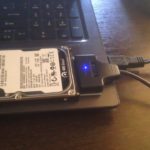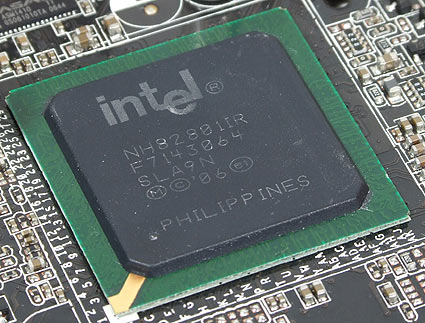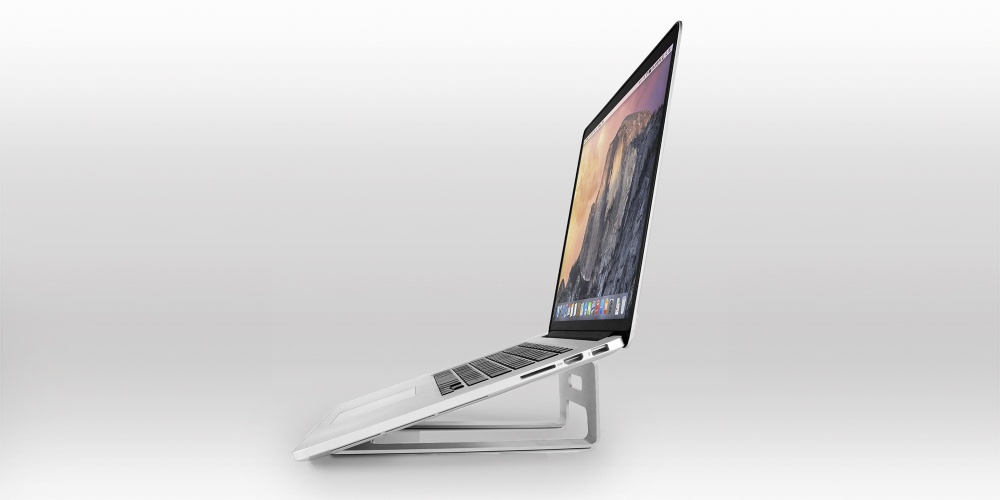How to connect an SSD to a laptop
Connecting an SSD to a laptop has many advantages: fast startup of Windows (OS startup time is reduced by almost 3 times), longer operation of a mobile PC on battery power, the SSD is much more resistant to mechanical shocks, there is no grinding noise (which can often be heard on certain models of HDD devices ).

The content of the article
Important points before connecting
Despite the fact that connecting an SSD drive is a fairly simple process that even a novice user can handle, it must be said right away that everything that will be done will be done at your own risk. Also, in certain situations, installing an external drive may void the laptop’s warranty.
What you will need for work:
- directly SSD drive and laptop;
- straight and Phillips screwdrivers (most likely the latter, this will depend on the method of fastening the device body);
- bank card (or any other, since it is most convenient to use it to pry off the cover that protects the hard drive and RAM of the laptop);
- flash drive or external storage drive (if you decide to replace a regular hard drive with an SSD drive, then most likely there are some documents that will need to be transferred from the old drive. Later they are copied from the flash drive to the new SSD device).
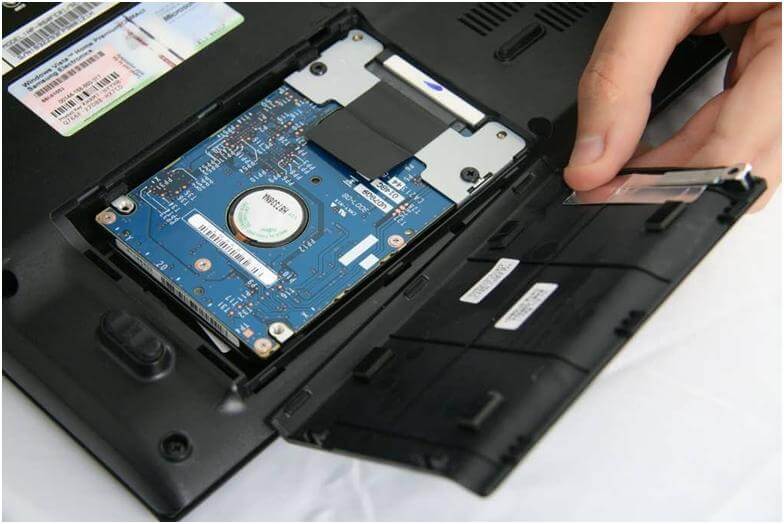
It must be said right away that there are several options for connecting an SSD to a laptop:
- Remove the old hard drive and install a new SSD drive in its place.To use the data that is on the old HDD, you must first transfer all the information to other drives before installing a new device.
- Connect an SSD instead of an optical CD drive. For which you will need a special adapter. The idea is as follows: take out the drive and install the adapter (where the SSD device is pre-installed). When purchasing an adapter, you need to pay attention to its thickness. There are simply several types of adapters: 9.5 and 12.7 mm. To determine which one is required in a particular case, you can do this: launch, for example, the AIDA application, determine the drive model and then find its parameters on the network. In addition, you can disconnect the drive and measure it with a ruler.
- This is the reverse method, unlike the second option: the SSD is installed in place of the old hard drive, and the HDD is installed in place of the drive using the same adapter. This method is much preferable.
- The last method is to connect an SSD in place of the old hard drive, but for the HDD you need to purchase a special box to connect it to a USB connector. This way you can use both external drives. The disadvantage is another cord and an additional box on the tabletop (for mobile PCs that are regularly carried, this is not the best option).
Connect an SSD to a laptop: step-by-step instructions
The most commonly used option is:
- First, turn off the laptop and remove all cords from the device (charger, speakers, mouse, external drives). Then turn the laptop over - there should be a lid on the back of the case that covers the hard drive and battery. Take out the battery by spreading the latches to the sides.Fixation may vary slightly on different devices.
- Then, with the battery removed, remove the bolts that secure the cover.
- The hard drive in laptops is usually secured with two screws. To remove the drive, you just need to unscrew them, and then remove the drive from the SATA port. Now you need to install the SSD in its place and tighten the bolts. This is done quite simply.
- When the disk is replaced, you need to secure the cover with a bolt and install the battery back. Connect all the cords (that were disconnected before) to the mobile PC and turn on the laptop. During startup, you immediately need to enter the BIOS.

Reference! When the menu opens, you need to determine an important point: whether the new hard drive will appear in the BIOS. As a rule, in laptops the BIOS indicates the drive model in the first menu (Main).
If the hard drive is not detected, then the following causes of malfunction are likely:
- Old BIOS.
- Non-working SSD device (if possible, it is best to check on another laptop).
- There is no contact with the SATA port (probably the hard drive was not fully installed into the connector).
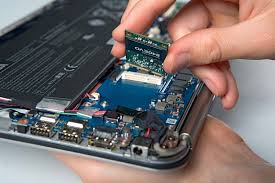
If the drive is detected, you need to check its operating mode (you need to install AHCI). In BIOS this menu is usually called Advanced. If a different status is specified in the parameters, you need to switch to ACHI, then save in the BIOS settings and exit.
After setting the required parameters, you can begin installing Windows and configuring it for the SSD. By the way, after connecting the SSD, it is best to install Windows again. Simply, during installation of the operating system, it will independently configure services for normal operation with the SSD device.

